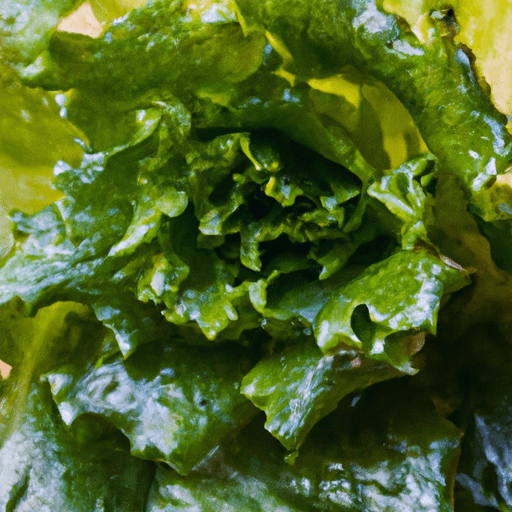Broad-Leaved Endive: A Versatile and Nutritious Leafy Green
Are you looking for a new leafy green to add depth and flavor to your dishes? Look no further than broad-leaved endive! Also known as escarole, this versatile and nutritious vegetable is a wonderful addition to any kitchen. In this blog post, we’ll explore the taste, common uses, nutritional value, and fascinating history of broad-leaved endive.
Taste
Broad-leaved endive has a unique flavor that combines bitterness with a hint of sweetness. Its broad leaves have a slightly crispy and tender texture, making it a fantastic addition to both cooked and raw dishes. The bitterness of the leaves adds complexity to salads and pairs well with a wide variety of ingredients.
Common Uses in Cooking
This leafy green is incredibly versatile and can be enjoyed in various ways. Here are some popular ways to use broad-leaved endive in your culinary adventures:
Salads: The slightly bitter taste of broad-leaved endive adds depth to salads. Simply tear the leaves into bite-sized pieces and toss them with a range of other fresh vegetables, fruits, and a tangy vinaigrette for a refreshing and nutritious meal.
Stir-Fries: Broad-leaved endive can be lightly sautéed or stir-fried to enhance its flavor and tame its bitterness. It pairs wonderfully with other vegetables, such as bell peppers, onions, and mushrooms, as well as proteins like chicken or tofu.
Soups and Stews: The sturdy leaves of broad-leaved endive hold up well in soups and stews, adding both flavor and texture. Consider adding it to traditional Italian dishes like minestrone or mixing it into hearty bean-based stews.
Nutritional Value
Broad-leaved endive is not only delicious but also packed with essential nutrients. Here are some key nutritional benefits of including this leafy green in your diet:
Vitamins and minerals: Broad-leaved endive is a great source of vitamins A, C, and K. These vitamins play important roles in maintaining healthy vision, supporting immune function, and promoting blood clotting.
Dietary fiber: Including broad-leaved endive in your meals can increase your fiber intake, aiding in digestion and promoting feelings of fullness.
Low in calories: If you’re watching your calorie intake, broad-leaved endive is a great choice. With only about 17 calories per 100 grams, it’s a satisfying option that won’t derail your healthy eating goals.
Interesting History and Facts
Broad-leaved endive has a rich history dating back to ancient times. Here are a few fascinating facts about this leafy green:
Mediterranean origins: Broad-leaved endive is native to the Mediterranean region and has been a staple in Italian and French cuisine for centuries. It was originally cultivated for its medicinal properties and later gained popularity as a versatile culinary ingredient.
Alternative names: While broad-leaved endive is its most commonly used name, it is also known as escarole or Batavia lettuce depending on the region.
Belgian endive: Don’t confuse broad-leaved endive with Belgian endive, a pale and tightly packed leafy green. While they belong to the same family, they have distinct colors, flavors, and textures.
Cool weather crop: Broad-leaved endive thrives in cooler temperatures, making it a popular vegetable in fall and winter when other leafy greens may be scarce.
Now that you know all about broad-leaved endive, why not introduce this flavorful and nutritious leafy green into your cooking repertoire? Whether you’re using it in salads, stir-fries, or soups, broad-leaved endive is sure to bring a delicious twist to your culinary creations. Enjoy exploring its unique taste and reaping the health benefits it has to offer!
Broad-Leaved Endive
Origin: Broad-leaved endive, also known as escarole or Batavia lettuce, is a leafy green vegetable that belongs to the chicory family. It is believed to have originated in the Mediterranean region, specifically in Egypt and Greece.
Common Uses: Broad-leaved endive is commonly used in salads, soups, and various cooked dishes. Its slightly bitter flavor adds depth to salads, and its sturdy leaves can hold up well in soups and stir-fries. In Italian cuisine, escarole is often cooked with pasta or used as a topping for pizza.
Nutritional Benefits: Broad-leaved endive is a nutritious vegetable with several health benefits. It is low in calories and fat while being rich in vitamins A, C, and K. It also contains significant amounts of dietary fiber, folate, potassium, and calcium.
Unique Properties: One of the unique properties of broad-leaved endive is its slightly bitter taste, which adds complexity to dishes. It has broad, curly leaves that are a beautiful shade of green. Unlike other lettuce varieties, it is more resistant to heat and can tolerate brief cooking.
Historical Significance: Endive has been cultivated for centuries. It was highly regarded by the ancient Egyptians and Greeks for its medicinal properties. The Ancient Romans also appreciated its culinary qualities. Over time, various variations of endive have been developed, including the broad-leaved endive, which is widely cultivated in different parts of the world today.
Remember to thoroughly clean and wash broad-leaved endive before using it in your recipes to remove any dirt or grit that may be present on the leaves.




Use the share button below if you liked it.
It makes me smile, when I see it.